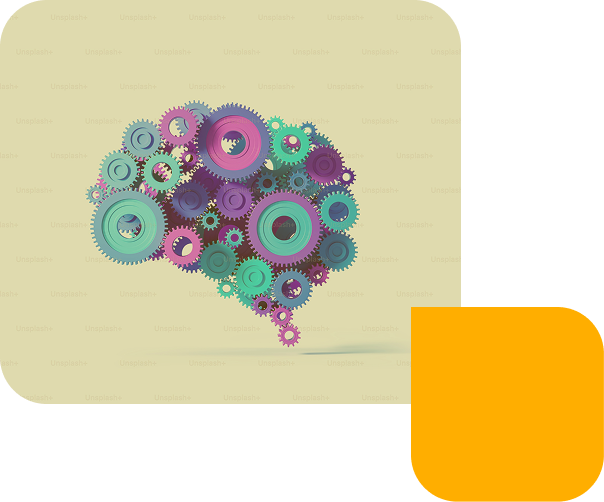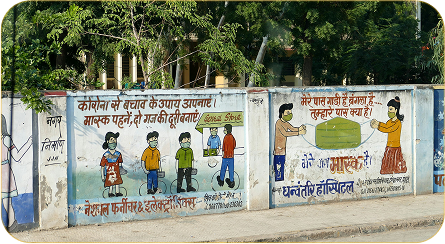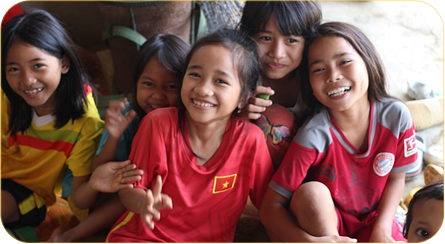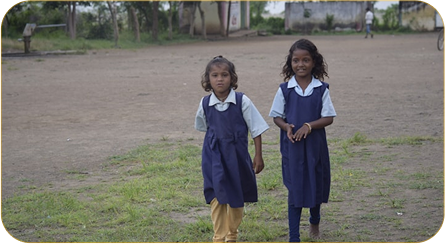The Imperative for Change:
Understanding the Challenges
A transparent look at the critical issues facing GHPS schools and why urgent action is needed.
The Challenges
Closing India’s Opportunity Gap
At Vidya Vihar Trust, we’re committed to addressing one of India’s most urgent challenges: the inequality of opportunity that limits the future of millions of children. In today’s India, a child’s economic destiny is still largely determined by the family they’re born into—not their potential, talent, or effort.
An IGE of 0 means
full economic mobility—
your future depends entirely on your own effort and abilities.
zero mobility—
your income will be the same as your parents’, no matter what you do.
This “Rich Dad–Poor Dad” gap highlights how structural inequality, not merit, is shaping young lives.
Early Childhood Development
& Brain Architecture:
The period from birth to age 6 is a critical window for foundational learning and rapid brain development, representing a period of unparalleled brain growth and plasticity. During this time, the brain forms up to 1 million new neural connections every second, laying the groundwork for all future learning, behaviour, and health.

Neural Pruning and Efficiency:
Neural pruning is a natural process where the brain eliminates unused or redundant neural connections, making the brain’s architecture more efficient. This process is profoundly shaped by a child’s experiences—connections that are used frequently are strengthened, while those that are not are pruned away.
Sensitive Periods for Learning:
Certain skills—such as language, emotional regulation, and social interaction—are most easily acquired during these early years. The brain’s heightened plasticity means that both positive and negative experiences have a profound and lasting impact.
Stimulating and Responsive Care:
A rich, nurturing environment—characterized by responsive caregiving, play, conversation, and exploration—directly influences the formation and strengthening of neural pathways.
- Responsive interactions (e.g., talking, singing, reading, and playing) foster language, cognitive, and social-emotional skills.
- Safe, predictable routines help children develop self-regulation and a sense of security.
Nutrition and Health:
Adequate nutrition, health care, and protection from toxins and stress are essential for optimal brain development. Malnutrition or chronic stress can disrupt neural growth and pruning, leading to long-term deficits.
Social and Emotional Foundations:
Secure attachments with caregivers build the foundation for emotional intelligence, resilience, and the ability to form healthy relationships later in life.


If neural pruning doesn’t proceed optimally in the first 6 years of life, due to a lack of stimulating, nurturing, or safe environments, the consequences can be profound:
Inefficient Brain Architecture:
The brain may retain too many weak or redundant connections or eliminate too many crucial ones, leading to less efficient neural pathways for processing information, learning, and adaptation.
Cognitive Impairments:
Children may experience difficulties in language and communication, problem-solving, critical thinking, memory, and attention, leading to significant struggles in academic performance.
Socio-Emotional and Behavioural Challenges:
Impacted brain regions responsible for emotional regulation can lead to increased anxiety, frustration, withdrawal, impulsivity, or difficulties in social interactions.
Increased Risk of Neurodevelopmental Disorders: Dysregulated neural pruning may contribute to the manifestation of certain neurodevelopmental and mental health disorders.
Widened Opportunity Gap:
These early deficits can persist through adolescence and into adulthood, severely impacting school readiness, academic achievement, and ultimately, an individual’s lifelong health and economic outcomes, thereby entrenching cycles of poverty.
However, critically, many of these consequences can be significantly mitigated or even overcome through timely and effective interventions. The brain, especially in early life, exhibits remarkable neuroplasticity—its ability to change, adapt, and reorganize itself in response to new experiences.
Early Intervention is Key:
Intervening during sensitive periods in childhood and adolescence, even if not at the “peak” of pruning, leverages high neuroplasticity. Targeted support (e.g., therapy, specialized education) can strengthen underdeveloped pathways.
Holistic and Family-Centred Approaches:
Providing consistent, stimulating, and responsive care in all environments, coupled with adequate nutrition and emotional support, is paramount for ongoing brain development and resilience.
The Power of Quality Education:
High-quality early childhood and foundational primary education offers the systematic stimulation needed to build cognitive and social skills. Emphasizing a growth mindset empowers learners to overcome hurdles.
Long-term Support and Adaptability:
A robust educational system that prioritizes continuous learning, vocational skill development, and personalized pathways can help individuals adapt and succeed, even if their early neurological development faced challenges.
Government Initiatives
in Early Childhood:
ICDS services are crucial and align with key aspects of early childhood development:
Supplementary Nutrition:
Addresses malnutrition among children and mothers.
Check-ups:
Ensures vital health interventions.
Non-Formal Pre-school Education:
Provides a stimulating, play-based learning environment for children aged 3-6.
Health and Nutrition Education:
Empowers mothers and caregivers with crucial knowledge.
Referral Services:
Connects beneficiaries to essential health services.
These government programs form a vital backbone for early childhood care and education in India, aiming to lay a strong foundation for children’s holistic development.
Other Pressing

Public education is the most powerful tool to close this gap. But across India, children—especially from rural areas, marginalized communities, and low-income families—continue to face:
Foundational Literacy & Numeracy Crisis:
Bridging learning gaps with joyful, competency-based approaches aligned with NEP 2020 and NIPUN Bharat initiatives.
21st Century Readiness Gap:
Equipping students with critical thinking, digital literacy, a growth mindset, and life skills for a dynamic world.
Insufficient teacher compensation leading to retention issues.
Lack of socio-emotional well-being support for students and teachers.
Limited parental and community engagement.
Vocational Education & Skill Development Gap:
Integrating practical, hands-on learning and industry-relevant skills to prepare students for future careers and lifelong employability.
Where We Work

Rural and tribal regions, where schools are often under-resourced.

Urban slums, where children face multiple vulnerabilities.

Girls from disadvantaged communities, who face layered discrimination.

First-generation learners, who need extra academic and emotional support.